5
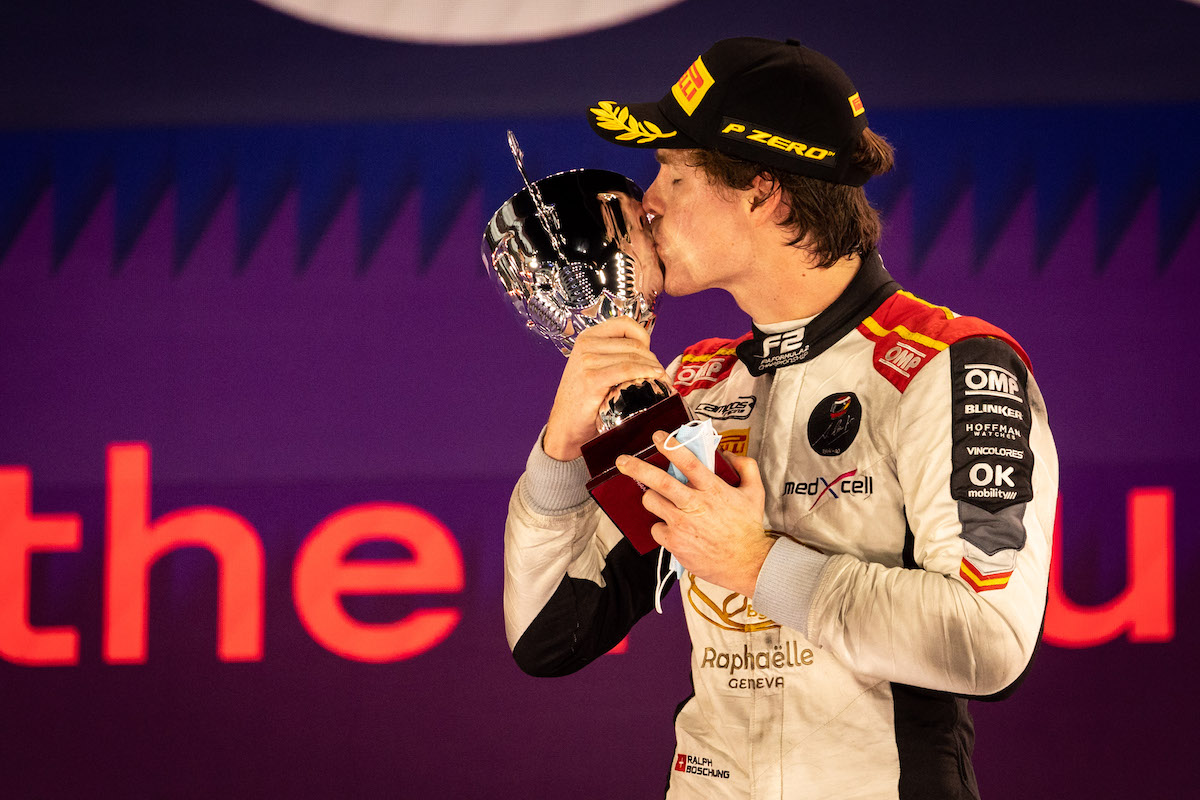
Photo: Dutch Photo Agency
Nico Hulkenberg recently lost his record for the most F1 race starts without a podium by setting a new record for the most starts before a maiden podium finish. Who has the equivalent in F1’s primary feeder series?
Most races without a podium
=9. Ricardo Teixeira ANGOLA 48 races
GP2 Asia (2009): 4 races, GP2 (2009-2013): 44 races Best result: 1x 13th
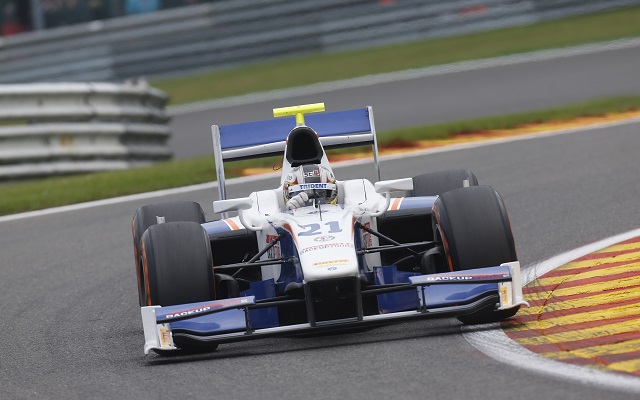
Photo: GP2 Media Service
The Angolan spent four years in British Formula 3 with almost nothing to show for it before stepping up to GP2 via its Asia series in early 2009. He could do no better than 17th place, but committed to a full season in the main series with Trident.
In his rookie season he was so slow in Monaco that he actually failed to qualify for the races, although he ‘bounced back’ from that next time out at Istanbul Park with his personal-best finish of 14th place.
That was matched at three other circuits in 2009, then he stepped down to MotorSport Vision’s confusingly named FIA Formula 2 championship for 2010. A year working with Team Lotus in Formula 1 then followed, before he returned to action via GP2 in 2012. In the second round he claimed his best ever finish in the series, a 13th place which he would not get close to beating through the rest of the campaign or two outings in 2013.
=9. Tomas Kaiser SWEDEN 48 races
European F2 (1982-1984): 21 races, Int. F3000 (1985-1987): 27 races Best result: 3x 4th
The Swede has spoken to Formula Scout before about his memories of European F2 prior to its demise as F1’s primary feeder series. It ran from 1967 to 1984, then was replaced by International Formula 3000 which ran through to 2004.
Kaiser debuted in 1982 in Thruxton’s BARC 200 race, then also drove at Hockenheim. The next year he suffered a lot of retirements, but finished a lapped eighth in the Rome Grand Prix and was seven laps down but classified in ninth at the Pau Grand Prix.
In 1984 he was ninth in the Deutschland Trophy at Hockenheim, two minutes behind the winner, a lapped seventh in Italy’s Rome and Mediterranean grands prix and eighth in its Adriatic Grand Prix.
In Britain he had improved form, coming eighth in the Donington Park 50,000 and then fourth in the Daily Mail Trophy at Brands Hatch. The race was red-flagged twice due to rain, and due to the restarted race being a full restart it meant the two portions of the race had to be added together to form the final result. Kaiser was third in the second part, but classified a distant fourth overall.
That fourth place was repeated in the next years in F3000, as Kaiser achieved the feat at Thruxton in 1985 and then in the Mediterranean GP in 1986.
8. Jason Tahincioglu TURKEY 50 races
GP2 (2006-2007): 40 races, GP2 Asia (2008): 10 races Best result: 1x 8th
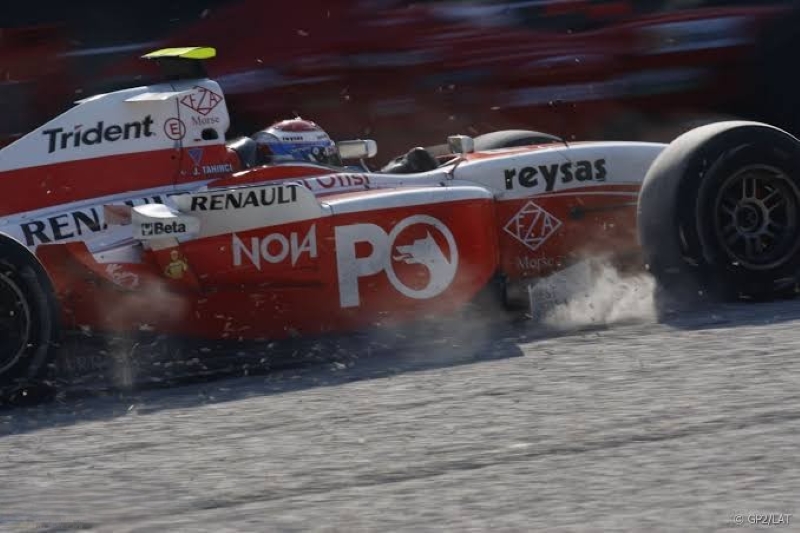
Photo: GP2 Media Service
Tahincioglu made his way up the single-seater ladder in part thanks to a surge of motorsport investment in his home nation. Not only did F1 visit the country for the first time while he was racing, but his father was also president of Turkey’s motorsport federation.
He was a backmarker in Formula Renault 2.0 UK (which was considered just above being an entry level slicks-and-wings series) for three years and never even finished a race in the top 10, yet had the financial backing to buy his way onto the GP2 grid for 2006 with Fisichella Motor Sport.
Tahincioglu actually failed to make the start on debut, then had three non-finishes and a disqualification. He usually qualified outside of the top 20 and always finished outside of the top 10, with a best result of 11th place as a rookie.
His sophomore season was even less competitive, bar qualifying 14th on home soil at Istanbul Park, and he finished 11th two more times in races where many retired. After that he joined BCN Competition for the inaugural GP2 Asia season, and in the Dubai Autodrome finale remarkably (considering his usual level) qualified 11th and finished the races in ninth and eighth.
7. Ferdinando Monfardini ITALY 51 races
Int. F3000 (2003-2004): 12 races, GP2 (2005-2006): 39 races Best result: 1x 4th
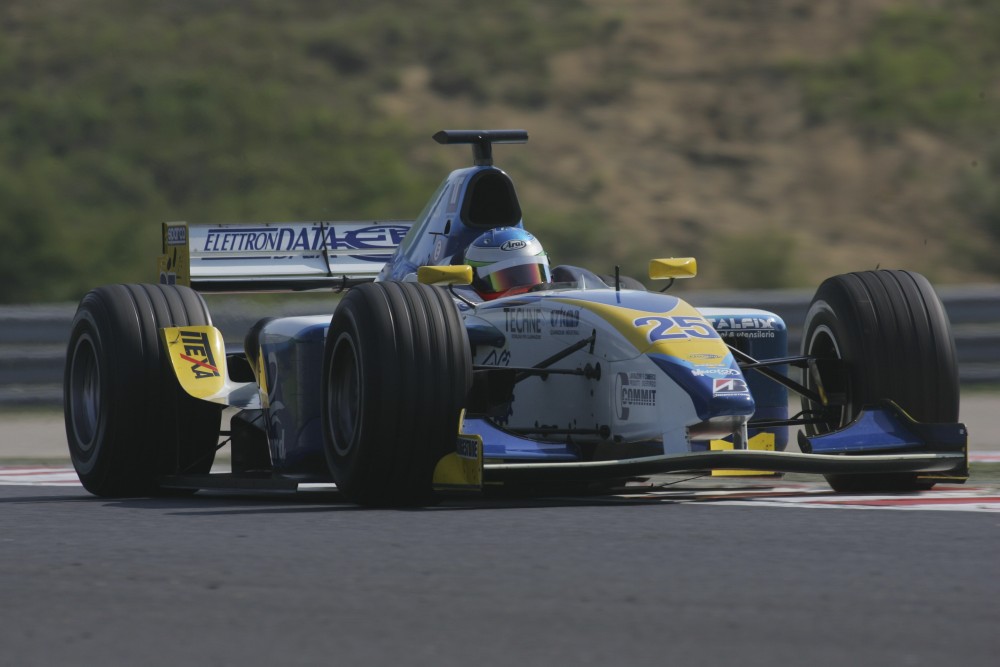
Photo: GP2 Media Service
Monfardini drove for BCN in the final two rounds of the 2003 Int. F3000 season, and finished 10th at his second attempt.
That gave him the confidence to do the full 2004 season, and while there were two top-10 finishes he languished 20th in the standings behind many part-timers.
When the championship was replaced by GP2, Monfardini stuck about and his experience of high-downforce machinery helped him in the inaugural 2005 season. He had a breakthrough at the Nurburgring by charging from 22nd to sixth, but then had no further top-10 finishes until his final outing with Durango at Monza where he qualified eighth and finished eighth in the feature race then finished fourth (a position held by 0.045s) from reversed-grid pole in the sprint race.
Monfardini missed the next round and returned with Scuderia Coloni for the finale. DAMS was his next home, and in the 2006 season he finished sixth three times. The first two were at Barcelona where he charged up from 20th in the feature race.
6. Guido Dacco ITALY 60 races
European F2 (1980-1984): 48 races, Int. F3000 (1985-1987): 12 races Best result: 1x 4th
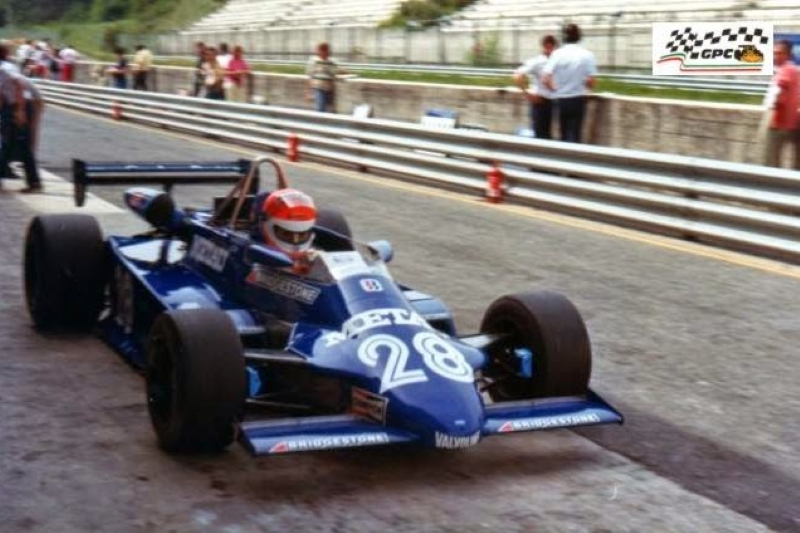
Photo: Gruppo Piloti Civitavecchia
According to one source, the late Dacco liked to be known as older than he actually was. Which is fitting given the experience he accumulated in the second tier of single-seaters.
Having debuted in European F2 in 1980, his first results of note came two years later and the highlight was seventh in the Mediterranean GP. In 1983 he was sixth in the Rome GP and fourth in the Adriatic GP, but a lap down in both, and in 1984 it was a similar story as he was lapped in the seven races where he claimed top-10 finishes. Fifth place in the Adriatic GP was the top result this time.
When F3000 arrived, Dacco became a more competitive racer but due to being a bad qualifier had to make his way up the order all the time. He finished a distant fifth at Spa-Francorchamps and Dijon, and was sixth in the Mediterranean GP and at Zandvoort (where he was lapped). The top three were always out of reach on race day.
Dacco later raced in Indy Nxt, where he did stand on a podium, and then in IndyCar.
5. Rene Binder AUSTRIA 74 races
GP2/F2 (2012-2017): 74 races Best result: 1x 6th
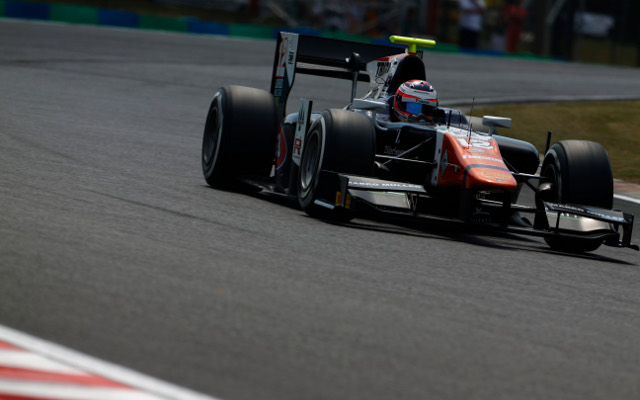
Photo: GP2 Media Service
Binder did 68 races in GP2, then four in Formula V8 3.5 before claiming his maiden podium in single-seaters’ second tier, but since the latter championship was a rival to F1’s primary feeder series his race-winning form there has no impact on this list.
The Austrian did three seasons in German F3 before finding form, and was a slow burner in GP2 as well. He started off with the uncompetitive Team Lazarus, doing three rounds in 2012 and getting a best finish of 13th.
His full season with them in 2013 started strongly, as he finished 11th and eighth in the opening two races at Sepang. In Monaco he lined up 22nd and second on the grid for the two races, and finished them in seventh and sixth. Although there were two more top-10 finishes that season, the only points he scored in the following two years were in the opening round of the 2014 season. He was usually uncompetitive, and split his 2015 campaign between Trident and MP Motorsport.
His first weekend with MP was at Monza, and he scored straight away with a 10th place and an eight. Binder never saw the points again.
4. Rodolfo Gonzalez VENEZUELA 80 races
GP2 (2009-2012): 64 races, GP2 Asia (2009-2011): 16 races Best result: 1x 4th
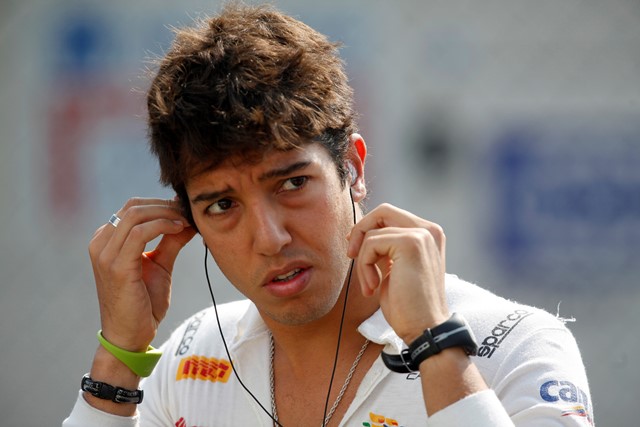
Photo: Alastair Staley/GP2 Media Service
Venezuela’s state-owned oil company PDVSA funded Gonzalez’s single-seater career, and as with countryman Pastor Maldonado (who was GP2 champion) that opened several doors in F1 and kept them open.
The one-time podium-finisher in British F3 arrived in GP2 Asia with FMS in 2009 and was a backmarker until a monsoon-hit weekend at Sepang where he qualified 14th then made his way up the order to two top-10 results.
He went full-time in the main series with Arden the year after, and Monza was the only circuit he could get within 1.6 seconds of pole. At Spa-Francorchamps he came eighth in the feature race, putting him on reversed-grid pole for the sprint race. Gonzalez only lost out to Sergio Perez in the race’s first half, but at a mid-race restart fell to fourth and stayed there.
That result was never close to being matched. Gonzalez got two ninth places in Asia and two in the main series in 2011, his average qualifying position being lower than 20th in the latter, then a move to the Caterham Racing team in 2012 included a surprise at Bahrain where he was half a second off pole in seventh but his average qualifying position was still a lacklustre 19.4. His only top-10 finish was in a chaotic Monaco sprint race where he was a distant fifth and a majority of drivers retired.
The aforementioned F1 links started off with the young driver tests, driving for Team Lotus/Caterham (2010, ’11 & ’12), Force India (2012) and then Marussia (2013) who signed him as reserve driver and used him in nine F1 practice sessions.
3. Marino Sato JAPAN 81 races
F2 (2019-2022): 81 races Best result: 4x 8th
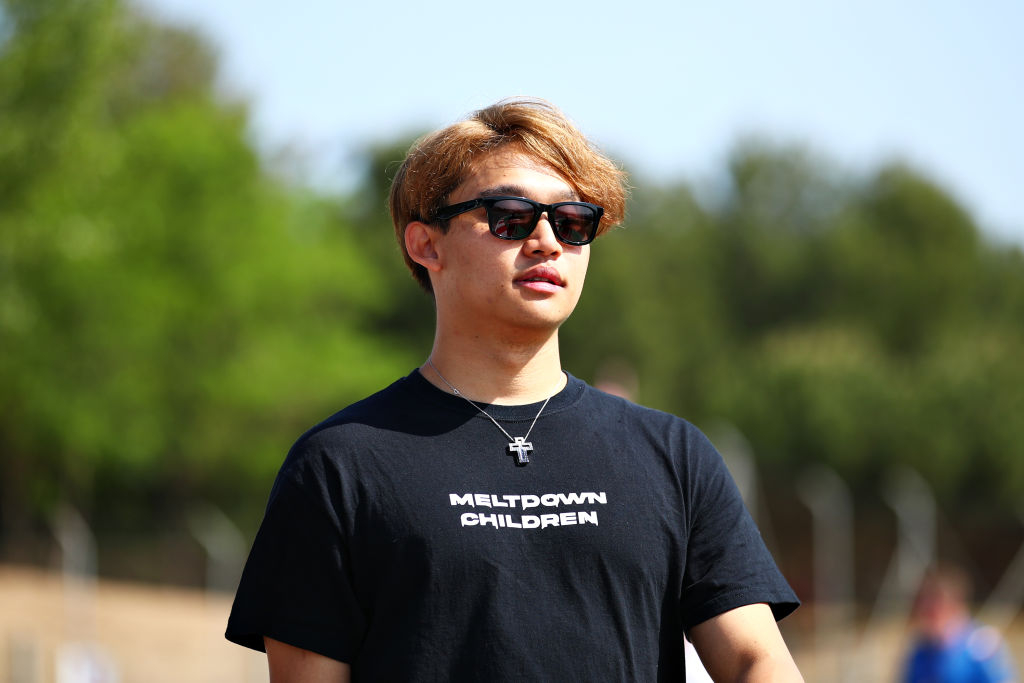
Photo: Formula Motorsport Ltd
Sato is one of several drivers in recent years to have struggled against their contemporaries, then increased their stock by racing in Euroformula and winning the title. But FIA European F3’s demise meant Sato was against Euroformula’s strongest ever field in 2019 and he still came out on top.
It turned out coming 16th in European F3’s 2018 season was more representative, as Sato only scored twice in his first 55 F2 races. With Trident he was one of the slowest drivers on the 2020 grid and was outside of the top 20 in 2021.
Moving to Virtuosi Racing for 2022 looked like it would unlock his underlying potential, as he was in the top 10 on outright and long-run pace in pre-season testing, but fundamentally Sato’s driving style was incompatible with the demands of F2’s Pirelli tyres. MP’s Clement Novalak had a similar problem, and the pair were the only full-time drivers on average not within a percent of the pole pace through the season. Sato was then 26th best in the field on race pace.
Ex-Formula E driver Tom Dillmann worked with Sato from day one of his F2 career on the issue, and by the end of 2022 the only positive that could be taken was Sato’s four top-10 finishes was twice the tally of the preceding years combined.
2. Daniel de Jong NETHERLANDS 90 races
GP2 (2012-2016): 90 races Best result: 1x 7th
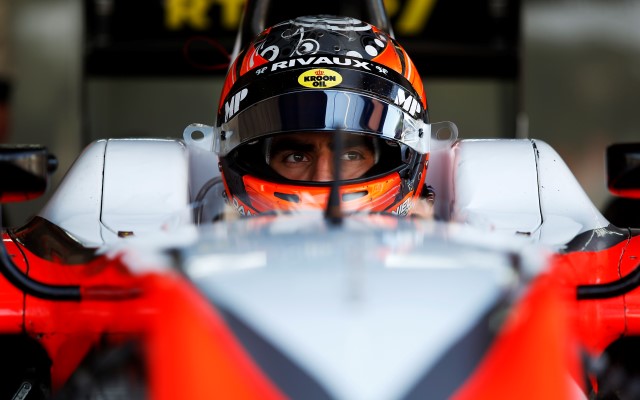
Photo: Zak Mauger/GP2 Series Media Service
“One more year,” said de Jong as he committed to a fifth GP2 season in early 2016. It was a rewarding decision, as his six points in the first five races matched what he had scored in his preceding 68 starts.
The majority of his GP2 experience came with MP, owned by his father Henk, so he had less need than some to think about how his budget and results would impact his chances of landing a seat each year.
De Jong raced for MP concurrently in the F3000-spec Auto GP during his first F2 campaigns to increase his experience of high-downforce single-seaters, but his podiums in the former did not translate into strong results in the latter.
He qualified sixth at Barcelona in 2015, and two weeks later in Monaco made the top 10 in qualifying for only the second time. However this came after crashing, which prevented rivals from improving late on.
On GP2’s chaotic first ever visit to Baku in 2016, de Jong finally finished high enough to benefit from a reversed grid, coming eighth in the feature race after a risky late pitstop paid off. From pole the next day he finished 14th.
His career-best result came in the 2013 Singapore sprint race, when he charged from 17th to seventh.
1. Amaury Cordeel BELGIUM 97 races
F2 (2022-2025): 93 races Best result: 1x 4th
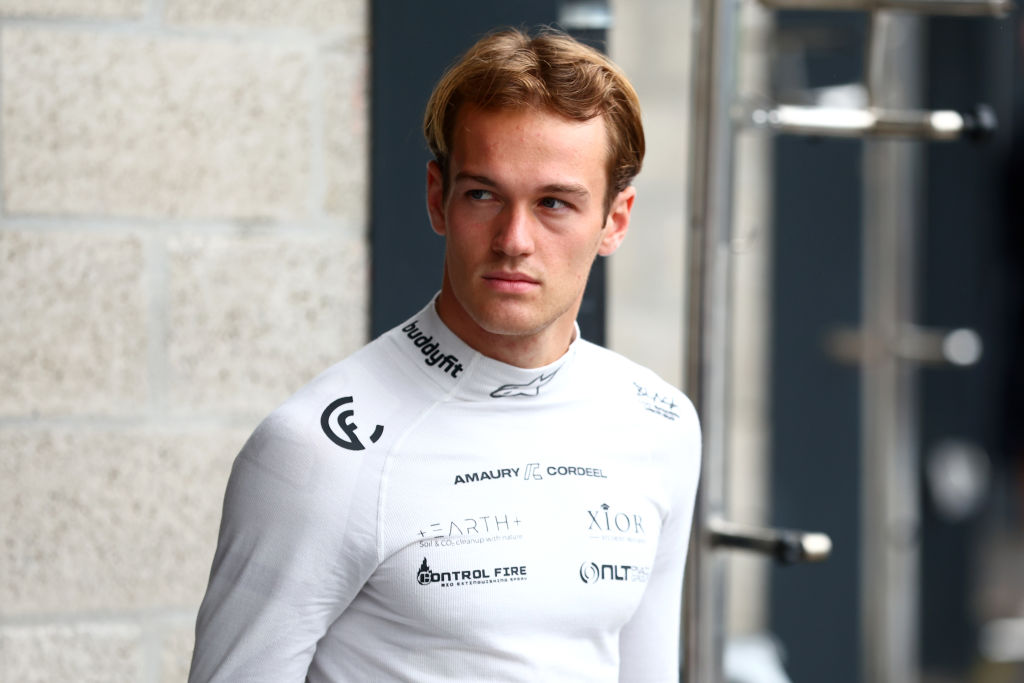
Photo: Formula Motorsport Ltd
Victory in the final round of the 2018 Spanish Formula 4 season, a day before he became champion, was the last time Cordeel saw a podium. He’s shown his speed since then, albeit on public roads and via TikTok videos.
Fourth place was his best result from 47 Formula Regional races, then an 11th place was the highlight of 20 races in F3.
The lack of results was not the main concern once Cordeel was on the F2 grid though, as in his third weekend he got four penalty points and a 10-place grid penalty for overtaking in a zone where double waved yellows were during a red flag period.
He missed a race that weekend in Jeddah, then another at Imola where he made multiple rule infringements and picked up a further five penalty points. At Barcelona he was out of position on the formation lap, and not following the rules led to a 10s stop-go penalty and two penalty points that put him out of contention for a maiden points finish.
A collision in Baku led to a race ban after just six rounds, and he qualified a surprise seventh on his return at the Red Bull Ring but got more penalty points. Cordeel ended his and Van Amersfoort Racing’s first season in F2 with four top-seven finishes in the last five races, then was off the pace through 2023 with Virtuosi. The Red Bull Ring was an exception again.
Hitech GP was Cordeel’s home for 2024, and he led three races and scored in six feature races. At Imola he topped a test session and then qualified 10th, putting him on sprint race pole. He ran third until the final three laps, then in the feature race led 23 laps as he overcut almost the entire field. When he pitted, his rear-right tyre flew off and ended his race.
The 23-year-old joined Rodin Motorsport for 2025 at late notice, and has scored three points while his rookie team-mate Alex Dunne fights for the title.
Most races before maiden podium
10. Ritomo Miyata JAPAN 45 races
European F2 (1973-1980): 14 races Best result: 3x 3rd
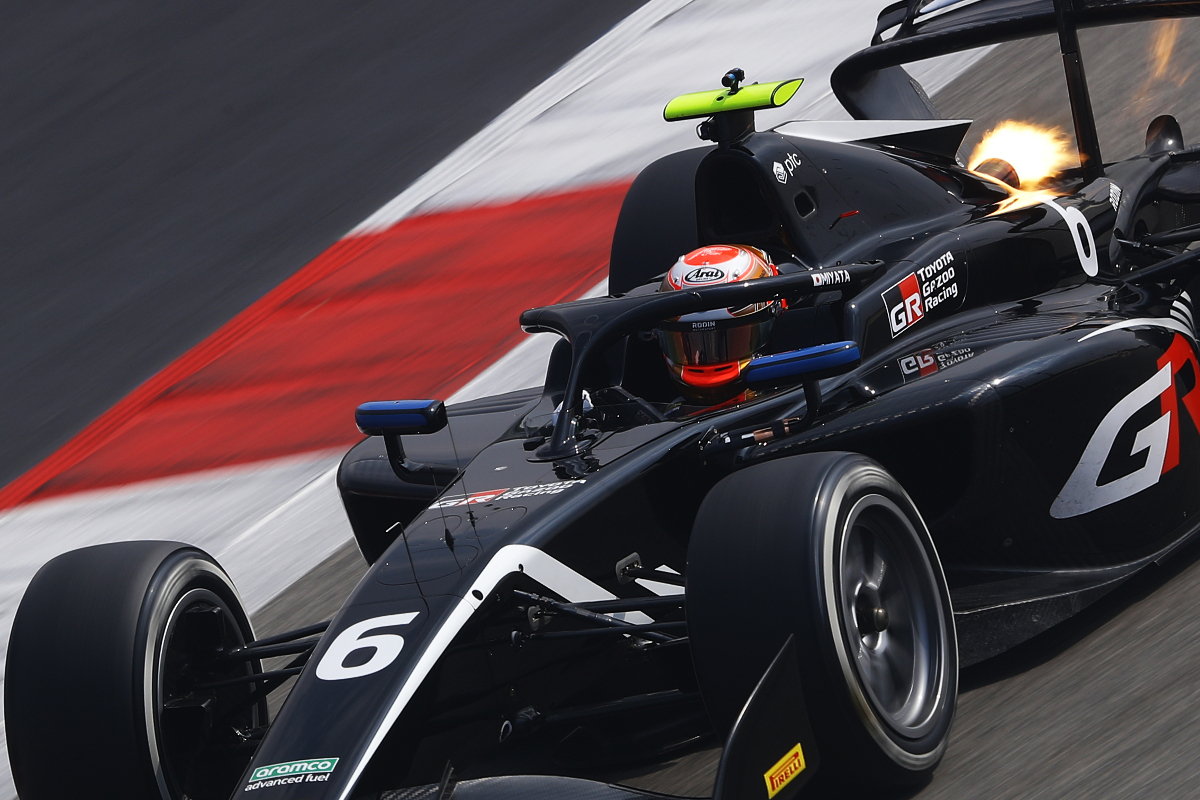
Photo: Formula Motorsport Ltd
A few weeks ago Toyota protege Miyata knocked Alberto Colombo, who raced in European F2 from 1973 to 1980 and made the podium three times, from this list with a breakthrough F2 event at Spa. He qualified second, finished eighth in the sprint race then was second in the feature race after the original top two drivers were hit with big penalties.
What makes Miyata’s inclusion in this list fascinating is that he’s already a champion of single-seaters’ top tier. He won the 2023 Super Formula title, then made the surprise switch to F2 as Toyota supported his dream of making it to F1.
A European Le Mans Series campaign was added to his schedule to boost his experience of F2 circuits, since his whole career had been Japan-based prior to last year. While Miyata shone in ELMS with two wins, he has struggled in F2.
He was just about in the top 20 on average single-lap and race pace as a rookie with Rodin, with two fifth places in Melbourne on his third F2 outing the highlight, and in the top 15 for both at the halfway point of this season with ART Grand Prix.
Miyata told media including Formula Scout that his confidence in the F2 car had grown two rounds prior to Spa and felt he had podium potential. He explained that switching teams meant he needed to learn even more for 2025, and reiterated to this writer that he had Toyota’s full support to stay in F2 despite the lack of results leading up to that.
9. Fairuz Fauzy MALAYSIA 46 races
GP2 (2005-2011): 62 races, GP2 Asia (2008-2011): 14 races Best result: 1 win
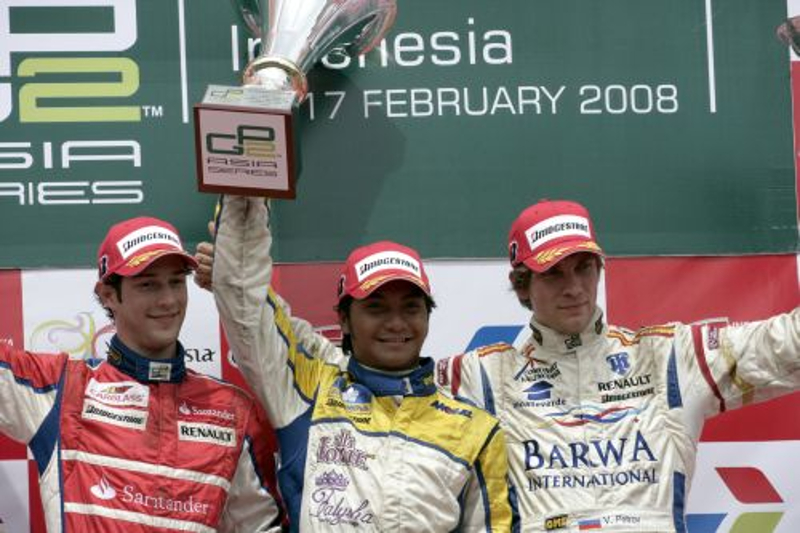
Photo: GP2
After the Malaysian Grand Prix’s induction on the F1 calendar in 1999, it was only a few months before a Malaysian driver reached the pinnacle of single-seaters. Alex Yoong made it into SF, F1 and CART in the early 2000s, and Malaysian investment remained in F1 through the next decade, helping more drivers from his country embark on international racing careers.
Fauzy was the next big hope for the nation in open-wheel cars, although his results in British Formula Ford, FR2.0 UK and British F3 did little to suggest he had an F1 future. But when he arrived in GP2 in 2005 with a car sponsored by Malaysian petroleum company Petronas, it was clear he had the backing to make it to the top.
His rookie GP2 season with DAMS was lacklustre, with four top-10 results but no points under the sporting regulations of the time, but the week before the season finale he was already making his top-level debut as he represented Malaysia in the new nation-based A1GP series. He would go on to win there for his nation.
Fauzy went points-free in GP2 again 2006, then in 2008 joined the new Asia series and won in treacherous conditions at Sentul. This time it wasn’t rain, but rather the track literally falling apart and cars driving through dust clouds (which led to overheating engines).
After becoming a race-winner in A1GP, he was 2009 FR3.5 runner-up and the Malaysian-owned Team Lotus signed him as reserve driver when it joined F1 in 2010. They released him from his contract at the end of the year and Fauzy returned to GP2 and FR3.5 for 2011. One podium from 32 races that year was not enough to keep him on the single-seater map.
8. Roy Nissany ISRAEL 48 races
F2 (2018-2023): 119 races Best result: 1x 3rd
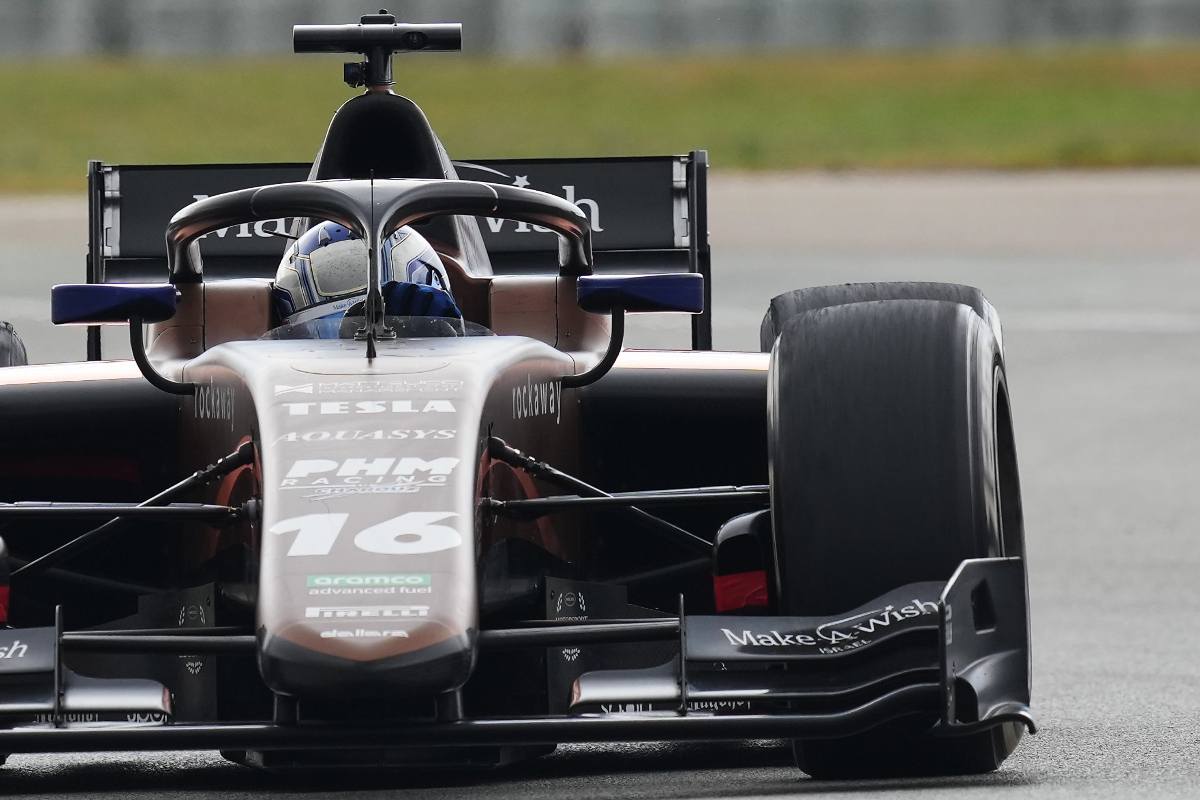
Photo: Formula Motorsport Ltd
The most experienced driver ever in single-seaters’ second tier took four wins and 10 other podiums in FR3.5 and its successor FV8 3.5, but in 119 F2 races claimed only one podium and two top-five finishes.
Seven years after his most successful FV8 3.5 campaign with Charouz Racing System, he reunited with the team in F2 two years ago and two ninth places in sprint races were the highlights of a points-free season.
Scoring nothing was a statistic Nissany has avoided until then, having scored at least one point in every year he has spent in F2 prior to 2023. In total he has 14 points finishes to his name, with eight of those coming in 2022 while driving for DAMS.
The year before that he had only scored three times with the team, but one of those was a third place in Monaco. Nissany started fourth for the first sprint race of the weekend, and was set to finish there before Christian Lundgaard suffered an engine failure ahead. He then had to hold off Campos Racing’s Ralph Boschung, who got a personal best result in fourth.
Nissany made his F1 test debut with Sauber while still in F3, where he had a best finish of sixth from 63 starts, then drove for Williams in 2019 post-season testing. After being signed as a test driver, he did six practice sessions across 2020 and ’21.
7. Simon Trummer SWITZERLAND 50 races
GP2 Final (2011): 2 races, GP2 (2012-2015): 72 races Best result: 1x 2nd
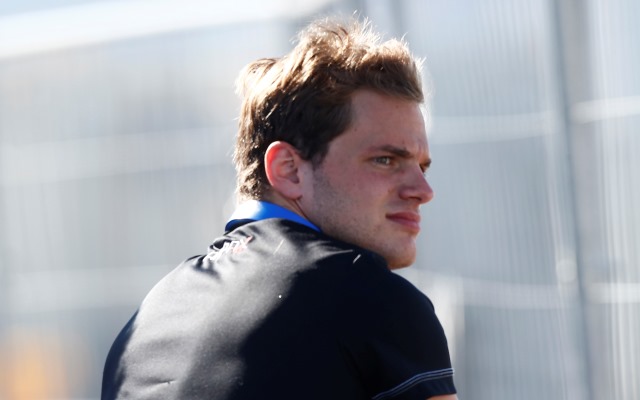
Photo: Sam Bloxham/GP2 Series Media Service
Trummer was runner-up in FR2.0 Switzerland (which did not race in the country), made the podium in International Formula Master then joined GP3 for its inaugural season in 2010. He finished sixth in the first ever race, then it took until the end of the 2011 season to match that as he made the top five in each of the last three races with Arden.
The team rewarded him with a seat in the GP2 Final, a two-race contest at Yas Marina Circuit. It was a tricky debut, as he was 22nd in qualifying then got a grid penalty for causing a collision, but he made it up to 15th in the sprint race.
He then signed with Arden for a full season in GP2, and the team continuity did not give him an advantage. In Valencia he scored in both races, but there was only two other top-10 finishes.
Joining Rapax for 2013 proved instantly rewarding, as he started the season with three points finishes. But he was not a points contender until visiting the Hungaroring, where he was only the 15th fastest driver on track but nailed the overcut strategy to lead for a while and finish sixth from 17th on the grid. In 2012 the same strategy led to him leading laps.
Trummer led three successive feature races in 2013, but didn’t score again until his final start of the year.
2014 started badly too, as he qualified 21st at Bahrain then had to start from the pitlane after stalling on the pre-grid. But that enabled him to once again pull off the overcut on the harder compound tyres and he led until pitting with two laps to go. He then made his way up to seventh, far behind the podium finishers.
But the result put Trummer second on the sprint race grid, which was where he finished. Trummer returned to anonymity for the rest of 2014 and his two 2015 outings. He moved on to sportscars, and was IMSA’s LMP2 class runner-up in 2020.
6. Johnny Cecotto Jr VENEZUELA 52 races
GP2/F2 (2009-2017): 126 races, GP2 Asia (2009-2011): 6 races Best result: 4 wins
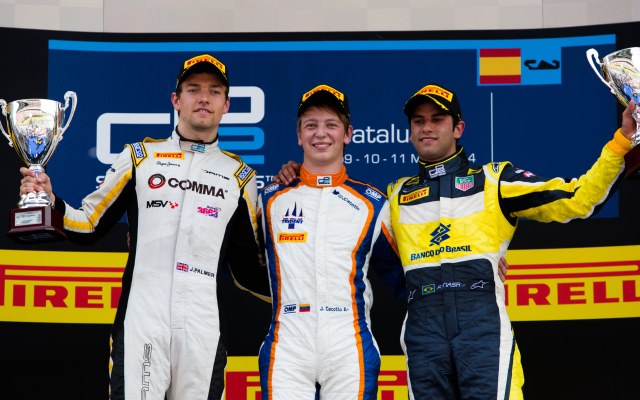
Photo: Malcolm Griffiths/GP2 Series Media Service
The son of the 1975 350cc motorcycling world champion, F1 driver and DTM star of the same name, Cecotto was somewhat of a state-funded talent.
Although he drove second-tier machinery in just his second year of single-seaters, it was old F3000 cars in Euroseries 3000.
He made four starts there before entering GP2’s last two rounds of 2009. He also did a GP2 Asia round with Trident, in which he made the top seven in both races, and stayed with the team for the main series in 2010. Cecotto was inconsistent and only scored once, a fourth place in the Monaco sprint race. A sign of things to come.
In 2011 he went points-free in GP2 and GP2 Asia, then a move to reigning champion team Addax for 2012 resulted in being mired in the midfield once again until he rocked up to Monaco and claimed pole. He converted it into victory in the feature race, but then spun and caused a multi-car pile-up on lap one of the sprint race. Cecotto had a reputation for being a driver as likely to cause chaos as he was to get a strong result, and the Monaco weekend was the epitome of that.
Next time out in Valencia was a nightmare, then at Silverstone qualified and finished second. Next up was Hockenheim, where he qualified 18th but used local knowledge to choose slick tyres on a wet track in the feature race. He assumed the lead when everyone else chose to pit, then made his own compulsory pitstop and won by nine seconds.
Coecotto claimed Monaco pole again in 2013, duly crashed out on lap one of the feature race then was barred from the sprint.
That podium-free season was followed by his most competitive one in 2014. At Barcelona he qualified 16th, but was seventh after a chaotic first lap of the feature race. He led by lap eight, and it only took two laps following his pitstop to return to the front and take a convincing win. At the Red Bull Ring he took pole and won the sprint race, and three further podiums put him fifth in the standings. Over the next three years Cecotto drove for four teams, and across 22 races took another two podiums.
5. Max Chilton ENGLAND 53 races
GP2 Asia (2008-2011): 12 races, GP2 (2010-2012): 62 races, GP2 Final (2011): 2 races Best result: 2 wins
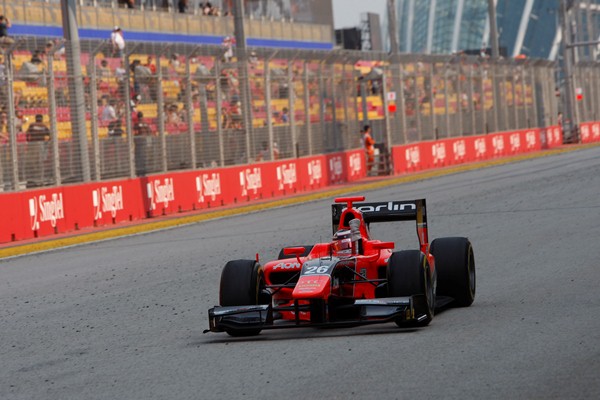
Chilton winning in Singapore (Photo: GP2 Media Service)
Another driver whose father paved the way to the top via some large-scale financial investments in their son’s career, Chilton is also the younger brother of former British Touring Car star Tom Chilton.
In 2009 the younger Chilton came fourth in British F3 with Carlin, a team his father became majority shareholder of and thereon became a maintay in Chilton’s career.
Although he first raced in GP2 with Ocean Racing Technology, once Carlin arrived in the series in 2011 he was back in their line-up and came 20th in the standings that year. A singular fifth place was Chilton’s best result after 53 races in the second tier of single-seaters, but he and the team made a big jump up the order as 2012 began.
Chilton started the season by coming 0.064s shy of pole, and turned third on the grid into third in the race but was almost half a minute behind the winner as he was mostly defending. He was consistently in the points thereon, putting in an attacking drive en route to second in the Monaco sprint race and winning the Hungaroring feature race from pole.
A further pole and another feature race win meant he came fourth in the points, and with the Marussia F1 team sponsoring Carlin through 2012 it was no surprise that Chilton then stepped up to F1 with Russian-owned manufacturer. He lost his seat after two seasons, and returned to second-tier single-seaters and Carlin in Indy Nxt before a career in IndyCar.
4. Michael Herck ROMANIA 55 races
GP2 Asia (2008-2011): 31 races, GP2 (2008-2011): 69 races Best result: 1x 2nd
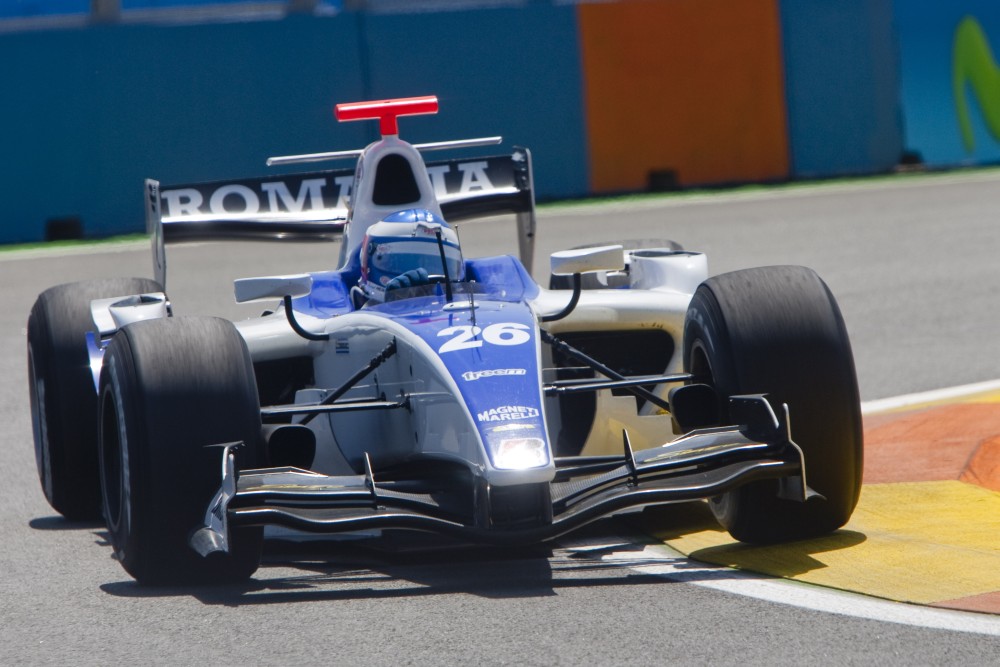
Photo: GP2 Media Service
The 2004 FR1.6 Spain champion had gone points-free in several series before making it to GP2, with FMS handing him his debut in the 2008 Asia series. He was dreadfully off the pace, but so were several others so it masked how out of his depth Herck was.
Herck then joined David Price Racing partway through the main series and it took until the finale to be less than 2.2s slower than the poleman in qualifying. An 11th place was the best finish that year.
The 2008-09 GP2 Asia season was an improvement, but there were still many weekends being far off the pace. His father then bought DPR, which secured Herck’s place on the GP2 grid for two more years before the team left the series.
Silverstone was the highlight of the 2009 season, finishing ninth and eighth but scoring no points, and at the Algarve finale he led some laps as he rose went from 19th on the grid to sixth in the feature race before being disqualified.
Herck began 2010 on a high in GP2 Asia. Although he only qualified 19th at Yas Marina, he made it to the front using the overcut strategy then made on-track overtakes after pitting to finish seventh. Second on the sprint race was well utilised, as he took the lead on lap one and held it until being passed on the penultimate lap.
That form reappeared once in the main series, qualifying sixth in Valencia and converting that into an eighth and a third in the races, before he moved to Coloni for 2011 and came eighth in GP2 Asia with a career-best qualifying result of third.
3. Alexandre Negrao BRAZIL 58 races
GP2 (2005-2007): 64 races Best result: 1x 2nd
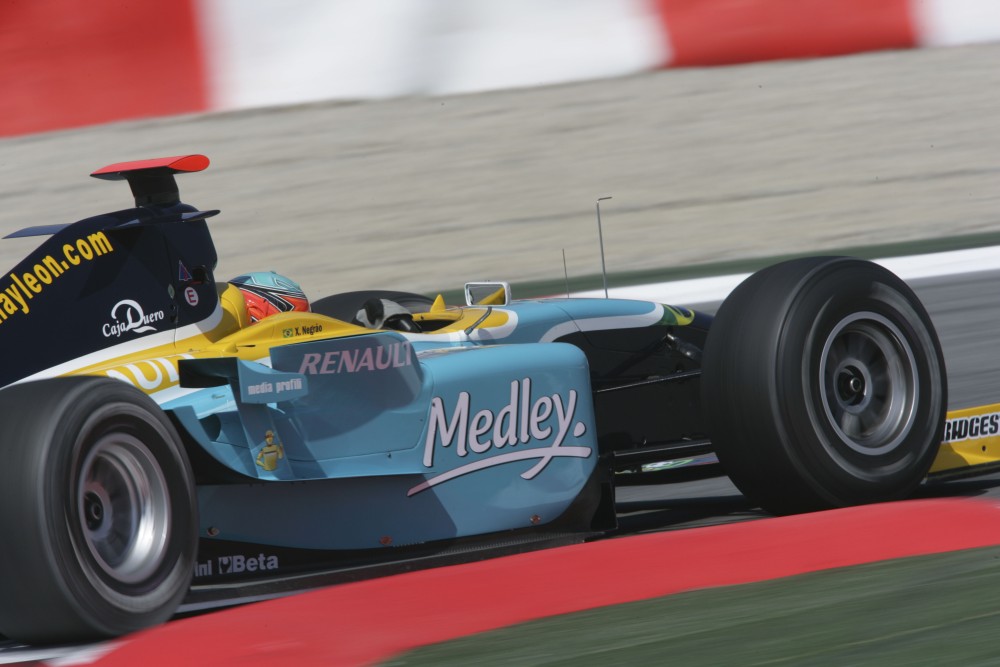
Photo: GP2 Media Service
Negrao won the 2004 F3 Sudamericana title, and two F3 races at Spa marked his only European experience when he stepped up to GP2 with Piquet Sports.
His rookie season was full of ups and downs, epitomised by his second weekend in GP2 at Barcelona where he qualified 22nd but finished eighth in a feature race full of attrition, then went from pole down to 19th on lap one of the sprint race.
He next scored a point at the Hungaroring, where he rose from 18th to eighth in the feature race and this time dropped to 22nd from pole on the sprint race’s opening lap. Two seventh places at Spa put him 19th in the standings.
When he wasn’t retiring, Negrao had consistency in 2006 and scored in almost half of the feature races. He finished seventh in four of the first seven races, but never finished higher than fifth while team-mate Nelson Piquet Jr fought for the title.
Negrao began 2007 by qualifying second at Bahrain, 0.085s off pole, but fell to ninth on lap one and later retired. He completed no racing laps at Barcelona, was lapped in Monaco, had three more retirements and didn’t have a top-10 finish until race 11 of the season. He finally looked competitive again at Istanbul Park, where he started and finished seventh in the feature race then went from second to fourth before recovering back to second in the sprint race for a surprise first podium.
2. Julian Leal COLOMBIA 64 races
GP2 Asia (2011): 4 races, GP2 (2011-2015): 102 races, GP2 Final: (2 races) Best result: 2x 2nd
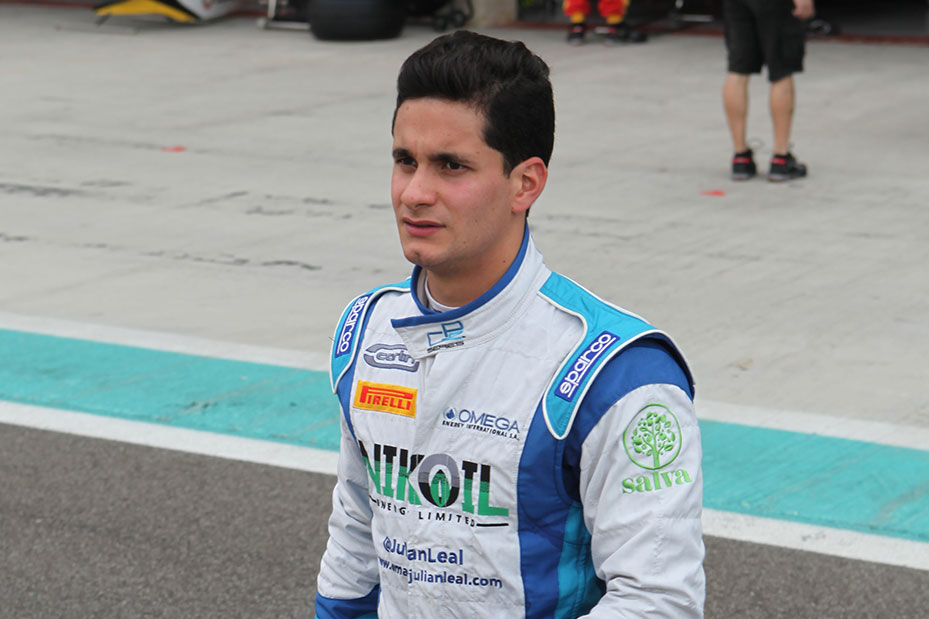
Photo: Julianlealweb
Leal had plentiful experience of old F3000 cars by the time he debuted in FR3.5, where he came 20th in both of his seasons.
For 2011 he moved across to rival series GP2, and remained there for five years. He debut in GP2 Asia, taking a best finish of 17th, then in the main series finished ninth in two sprint races. It took 36 races in the car before Leal broke his points-scoring duck, and despite scoring nine points in 2012 he was still outside of the top 20 in the standings.
He moved to Racing Engineering for 2013, and got two sprint race podiums while improving his best feature race result to fifth. Meanwhile team-mate Fabio Leimer scored three times as many points and won the title.
Eager to still prove himself, Leal signed with Carlin for 2014 and began the campaign with his first two podiums. He qualified 12th for the Bahrain season opener, but boosted by a quick pitstop was able to climb up to second. The next day he went from seventh to third on lap one, then he and Trummer attacked that year’s champion Jolyon Palmer all race long.
Leal sat second in the standings after four races, then only scored four times in the remaining 18 races and dropped to 10th in the points table and was outscored to the same degree by his team-mate as in 2013. He remained with Carlin for 2015, but after reaching 100 races in the main GP2 series announced his ‘retirement’ from it and missed the last three rounds.
1. Ralph Boschung SWITZERLAND 76 races
F2 (2017-2023): 120 races Best result: 1 win
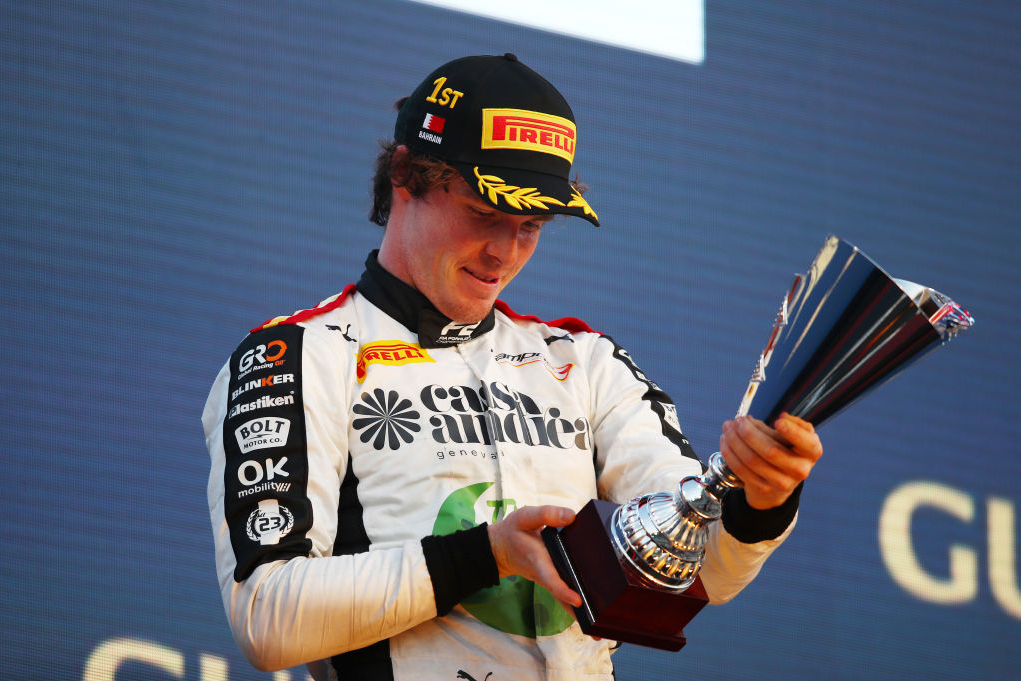
Photo: Formula Motorsport Ltd
Boschung ran out of budget one round before the end in his rookie F2 season in 2017, then suffered the same fate two rounds from the finish in 2018.
The funding dried up after five rounds in 2019, but he was able to return to return for two rounds later in the year, then in 2020 he only contested the season finale as a last-minute stand-in for Jack Aitken who had been summoned to race in F1.
The elusive prospect of a full season finally occurred in 2021 with Campos, and having greater financial stability was reflected in Boschung’s results. He came 10th in the standings and in the final two rounds claimed his first two podiums.
In Jeddah he qualified seventh, and made up four places at the start of the feature race before it was red flagged. When it was eventually restarted, only five laps were completed before race-ending red flags waved again with Boschung still third. A week later at Yas Marina he proved it was no fluke as he finished third from the front row in the second sprint race.
He started 2022 looking even stronger but after qualifying fourth and finishing the feature race in third at Imola his season was ruined by a neck injury that ruled him out for 12 races. On his second attempt at a comeback he made the podium, showing the potential that year could have held.
Fully recovered, and with a Campos team benefitting from a high-profile technical signing, Boschung began 2023 with the victory he had spent years pursuing, and even led the championship before a long points-free run that made for another ‘what if?’.